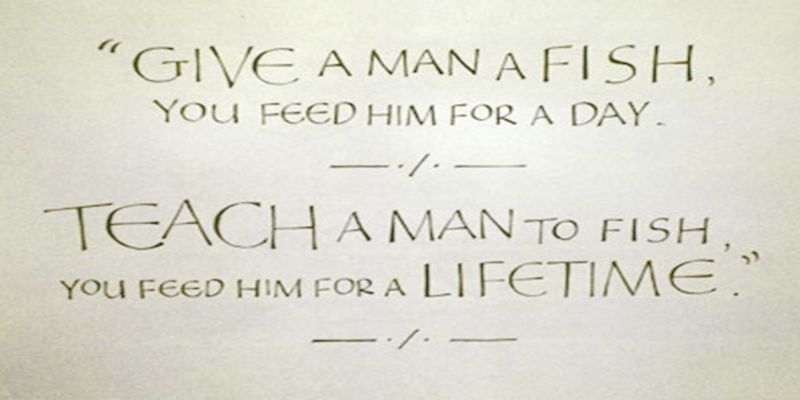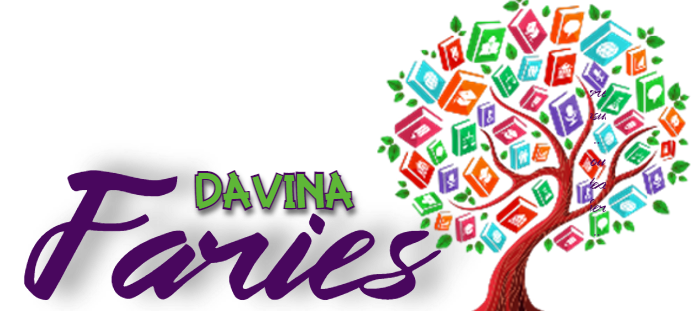
COVA Reflection & Application
I created an innovation plan with the aim of providing helpful support to students by incorporating student-centered learning, critical thinking, digital literacy, personalized goal setting, and the application of knowledge in authentic contexts. By including these elements, the plan offers a comprehensive framework to foster students’ growth, engagement, and success in their educational journey. My strong belief in the value of allowing students to set their own pace drove me to ensure they were adequately prepared. Upon examining the skills needed to achieve their goals, I found several reasons why my plan would be beneficial.
Drawing from my experience with my own children, I recognized that they often struggled to understand how to identify what they didn’t know and find help. They had difficulty using worksheet titles to search for examples or explanations. Therefore, the first step of my plan involves incorporating the use of the Internet as a resource to help students develop essential research and digital literacy skills. This skillset enables them to navigate online information effectively, accessing a vast array of knowledge and resources that empower them to become independent learners.
The next step addressed my children’s need to understand what they wanted to learn and whether they were making progress. Consequently, I focused on individual learning goals, which encourages a personalized approach to education. By allowing students to set their own objectives, they take ownership of their learning journey, tailoring their studies to their specific interests, needs, and aspirations. This approach enhances student motivation and engagement as they perceive the relevance and value in what they are learning.
While my children learned how to seek help and set goals, I also wanted to help them assess their comprehension. Therefore, my plan incorporates reflection and self-analysis, cultivating metacognitive skills in students and fostering self-awareness and accountability for their learning. This process allows students to identify their strengths and areas for improvement, fostering a growth mindset and supporting ongoing academic and personal development.
To create a true blended learning model, I decided to employ the station rotation model, which offers a diversified learning experience by incorporating various instructional approaches and learning modalities. By catering to different learning styles and preferences, this approach ensures that students have multiple opportunities to engage with the content in meaningful ways.
Lastly, I tackled the challenge of integrating authentic learning opportunities that connect classroom learning to real-world contexts, making the content more relevant and meaningful to students’ lives. This approach enhances their understanding and application of knowledge and skills, equipping them for future challenges and careers.
Summarize the Innovation Plan, C.O.V.A. model, and CSLE Framework: – Part B
Understanding the C.O.V.A. model
The COVA model stands for Choice, Ownership, and Voice, which are key principles in student-centered learning approaches. Here’s a brief explanation of each component:
Choice: Providing students with choices and options in their learning activities and assessments. This allows them to have a sense of autonomy and control over their learning process, promoting engagement and motivation.
Ownership: Encouraging students to take ownership of their learning by setting goals, monitoring their progress, and reflecting on their achievements. This helps develop a sense of responsibility and accountability for their academic growth.
Voice: Giving students a voice in the classroom, allowing them to express their thoughts, ideas, and opinions. This involves promoting open discussions, collaborative activities, and opportunities for students to share their perspectives. It fosters active participation and empowers students to contribute to the learning community.
COVA is often used as a framework to design learning experiences that prioritize student agency, personalization, and meaningful engagement in the educational process.
Understanding CSLE framework
CSLE stands for Creating Significant Learning Environments. It is an approach or framework that focuses on designing and facilitating learning environments that promote deep and meaningful learning for students. CSLE is rooted in the work of L. Dee Fink, an educational theorist and author.
The CSLE framework emphasizes the importance of engaging students in active and authentic learning experiences that go beyond surface-level understanding. It encourages educators to design learning environments that foster critical thinking, problem-solving, collaboration, and reflection.
The CSLE framework incorporates six core principles:
Foundational Knowledge: Ensuring students have a solid understanding of the fundamental concepts and information related to the subject matter.
Application: Providing opportunities for students to apply their knowledge and skills in real-world or authentic contexts, allowing for practical application and transfer of learning.
Integration: Helping students make connections between different concepts, ideas, and disciplines, promoting interdisciplinary thinking and understanding.
Human Dimension: Considering the personal and social aspects of learning, recognizing that learning is influenced by emotions, relationships, and societal factors.
Caring: Creating a supportive and inclusive learning environment that values students’ well-being, fosters positive relationships, and promotes a sense of belonging.
Learning How to Learn: Equipping students with metacognitive skills and strategies that help them become self-directed learners, capable of setting goals, monitoring their progress, and adapting their learning approaches as needed.
By intentionally incorporating these principles into the design of learning experiences, educators can create environments that promote deep understanding, meaningful engagement, and long-lasting learning outcomes for students.
Blending C.O.V.A and CSLE
CSLE and COVA share several similarities in their approach to education. Both frameworks emphasize the importance of creating meaningful and engaging learning environments that promote deep understanding, student engagement, and the application of knowledge. As I moved through the Applied Digital Learning masters program, I became more familiar with both of these methods. Looking at the similarities of each concept and melded the two together streamlines the concept and ensured my innovation plan incorporated adequate levels of each component:
Both CSLE and COVA recognize the significance of connecting learning to real-world contexts. They emphasize the integration of authentic experiences, tasks, and assessments that reflect the complexities and challenges of the real world. This approach enhances students’ understanding and application of knowledge, making learning more relevant and meaningful.
Both frameworks prioritize student engagement and ownership of the learning process. They encourage student voice and choice, allowing learners to have a say in their learning goals, methods, and assessments. This empowers students to take ownership of their education and promotes intrinsic motivation.
CSLE and COVA support personalized learning by acknowledging the unique needs, interests, and strengths of individual learners. They advocate for tailoring instruction and learning experiences to meet students’ specific needs and provide opportunities for self-directed learning and goal setting.
CSLE and COVA emphasize the application of knowledge in meaningful and authentic contexts. They go beyond rote memorization and encourage students to apply what they have learned to solve real-world problems, make connections, and create meaningful artifacts.
Both frameworks recognize the importance of developing essential skills, such as critical thinking, problem-solving, collaboration, communication, and digital literacy. They promote the integration of these skills into the learning experiences, preparing students for success in the 21st century.
While CSLE focuses on the overall design and structure of a significant learning environment, COVA specifically addresses the elements of meaningful content, desired outcomes, student voice and choice, and authenticity within that environment. Together, these frameworks provide a holistic approach to creating impactful learning experiences that foster deep understanding, engagement, and student success.

How does it all fit together?
The innovation plan combines elements of the COVA model (Creating Significant Learning Environments) and the CSLE framework (Creating Significant Learning Environment) to create a comprehensive approach to education. The plan focuses on student-centered learning, critical thinking, digital literacy, personalized goal setting, and the application of knowledge in authentic contexts. It embraces the COVA requirements of meaningful content, desired outcomes, student voice and choice, and authenticity. By incorporating individual learning goals, station rotation, and authentic learning opportunities, the plan empowers students to take ownership of their learning, make decisions, and apply their knowledge in real-world situations. It also aligns with the CSLE framework by emphasizing foundational knowledge acquisition, application in authentic contexts, integration of concepts, consideration of the human dimension, and fostering the development of students’ learning-to-learn skills. By implementing this innovation plan, educators create a significant learning environment that promotes student engagement, relevance, deep understanding, and the development of essential skills for success in the modern world.
How will I implement the plan?
Since I am a secondary science teacher of Astronomy my overview of how I will implement my plan will be laden with examples using Astronomy:
Choice in Research Topics: Allow students to choose specific topics within gravity, atmospheres, distances, and magnetic fields that they find interesting or want to explore further. Provide them with a list of options or allow them to propose their own topics, ensuring they align with the learning objectives. This choice empowers students to take ownership of their learning and pursue areas of personal interest.
Authentic Investigations: The instructor designs authentic assignments that involve real-world applications of the concepts being studied. For example, students are tasked with researching the effects of gravity on space travel or analyzing atmospheric conditions on different planets. They are encouraged to gather data, conduct experiments, or use simulations to explore these topics. The authenticity of these assignments creates a meaningful context for learning and helps students see the practical relevance of their studies.
Project-Based Learning: Implement project-based learning (PBL) activities that allow students to delve deeper into their chosen topics. Provide them with a project framework that includes specific objectives, criteria, and guidelines, but also allows room for creativity and personalization. For instance, students could create models, presentations, or multimedia resources to demonstrate their understanding of gravity, atmospheres, distances, or magnetic fields. This approach fosters student voice and choice as they make decisions about how to present their findings.
Collaborative Discussions and Presentations: Organize opportunities for students to engage in collaborative discussions and presentations. Assign groups or allow students to form their own groups based on their research interests. Encourage them to share their findings, exchange ideas, and provide feedback to one another. This promotes peer learning and gives students a platform to voice their opinions, perspectives, and discoveries.
Student Reflection and Self-Assessment: Incorporate reflection activities where students can critically analyze their own learning progress, challenges, and achievements. Encourage them to self-assess their understanding of gravity, atmospheres, distances, and magnetic fields and set goals for further exploration. This reflection process empowers students to take ownership of their learning journey and identify areas for growth.
By incorporating these strategies, educators can provide their astronomy learners with choice, ownership, and voice in their exploration of gravity, atmospheres, distances, and magnetic fields. This approach fosters their engagement, deepens their understanding, and helps them develop skills necessary for scientific inquiry and critical thinking. The inclusion of interactive activities, group discussions, and hands-on projects empowers students to actively participate in their learning, encouraging them to take ownership of their knowledge and apply it in meaningful ways.
Through outcome-based education and a backward design approach, educators can design lessons that prioritize the desired learning outcomes and guide students towards achieving them. Starting with the end goals in mind and working backward ensures a purposeful and coherent learning journey. By incorporating formative assessments and reflection activities, educators can provide timely feedback and support students in their growth and development.
This student-centered approach to astronomy instruction not only promotes engagement and deeper understanding but also helps learners develop essential skills for scientific exploration. By fostering choice, ownership, and voice in their learning, educators empower students to become active participants in their own education, cultivating curiosity, critical thinking, and problem-solving abilities.
Overall, incorporating these strategies in astronomy instruction can create a rich and meaningful learning experience, equipping students with the necessary skills and knowledge to navigate the fascinating world of celestial phenomena.
Example Lesson Plan:
What are some issues I foresee?
While using the COVA approach and creating a CSLE can bring numerous benefits, there are also some challenges that educators may face. Designing and implementing authentic assignments, providing choices, and fostering student ownership and voice can require additional time and effort in lesson planning and preparation. Balancing these innovative approaches with the existing curriculum and time constraints may be a challenge. Authentic assignments may not fit neatly into standardized grading systems, and evaluating student growth and achievement based on individual goals and self-assessment can be challenging. Developing appropriate rubrics and assessment criteria to measure learning outcomes is crucial.
Authentic assignments and creating a significant learning environment often require access to appropriate resources, materials, and technology. Ensuring that students have equitable access to these resources can be a challenge, particularly if there are limitations or disparities in technology or other necessary tools.
Students may not be accustomed to having a significant degree of choice and ownership in their learning. Some students may initially struggle with decision-making, self-direction, or managing their time effectively. Providing guidance, scaffolding, and support to help students navigate and make the most of these learning opportunities is essential. Incorporating choice, ownership, and voice can create a more dynamic and student-centered classroom environment. However, managing student autonomy and facilitating productive group work or discussions may require careful planning, clear expectations, and effective classroom management strategies.
Finally, the educators must maintain open communication, and ongoing reflection on the effectiveness of these approaches can help educators navigate these challenges and create a rich and engaging learning experience for the students.
Are the Students Ready?
In order to create a successful learning experience, educators should establish clear expectations for their students. They should effectively communicate the goals and objectives of the COVA (Choice, Ownership, Voice, and Authenticity) and CSLE (Creating Significant Learning Environments) approaches, emphasizing the significance of exploration, choice, and ownership in the students’ learning process. By providing a strong base of knowledge and skills through appropriate scaffolding, educators can empower students to actively engage in independent exploration and take ownership of their learning journey.
To support their learning, offer a variety of resources and reference materials related to astronomy. These can include books, articles, websites, videos, and simulations. Ensure that the resources are accessible and appropriate for different learning levels. Model and demonstrate how to conduct independent research, analyze data, and communicate findings effectively. This will guide students in their exploration and enhance their critical thinking skills.
Choice and options are essential components of the COVA and CSLE approaches. Provide a range of topics, projects, or assignments that students can select based on their interests and relevance. This empowers them to take ownership of their learning and promotes intrinsic motivation. Foster collaboration and peer learning by creating opportunities for students to share their discoveries, insights, and questions with their peers. Encourage discussions, group projects, or online forums where they can collaborate, exchange ideas, and provide feedback to one another.
Offer ongoing support and guidance throughout the learning process. Be available to answer questions, provide clarifications, and offer individualized assistance when needed. Encourage reflection and self-assessment by incorporating regular opportunities for students to evaluate their progress, set goals, and reflect on their learning journey. This promotes metacognitive skills and deeper understanding.
Finally, celebrate students’ achievements and showcase their work to the school community. Recognizing their accomplishments reinforces their sense of achievement and motivates them to continue exploring and learning in the field of astronomy.
Why Educators Need to Change
The combination of the innovation plan, CSLE framework, and COVA model offers a comprehensive and student-centered approach to learning. The innovation plan provides a roadmap for incorporating authentic assignments and meaningful learning experiences related to classroom concepts. The CSLE framework ensures the creation of a supportive and engaging learning environment that promotes critical thinking and active participation. The COVA model empowers students by giving them choice, ownership, and voice in their learning journey.
Throughout the implementation of this approach, students are encouraged to explore topics such as gravity, atmospheres, distances, and magnetic fields with the goal of understanding the requirements for life. They are provided with resources, guidance, and scaffolding to support their independent exploration. Authentic assignments and projects enable students to apply their knowledge in real-world contexts, fostering a deeper understanding and relevance to their lives.
While implementing the COVA approach and CSLE framework, challenges may arise, such as the need for personalized support, managing diverse learning paths, and ensuring adequate resources. However, through clear expectations, ongoing guidance, and regular reflection, these challenges can be addressed and overcome.
This approach creates an enriching and student-driven learning experience. It nurtures curiosity, critical thinking, and problem-solving skills while promoting student agency and ownership. By preparing learners for this new environment, they are equipped with the necessary skills, resources, and support to explore classroom concepts independently and develop a deeper understanding of the fascinating world around them. Hopefully, students will see the benefit of learning, overall incorporating self-centered learning gives each student the opportunity to learn how to learn. Which in the ends is the most crucial part of this whole endeavor, since teaching a person to fish is more valuable than just feeding the person.
References:
Fink, L.D. (2003) A Self-Directed Guide to Designing Courses for Significant Learning. San Francisco: Jossey-Bass.
Harapnuik, D. (2022, May 25). Active Learning via Learner’s Mindset and the CSLE+COVA framework. Harapnuik.org. https://www.harapnuik.org/?s=CSLE
Harapnuik, D. (n.d.). C.O.V.A. COVA Model. Retrieved from https://www.harapnuik.org/?page_id=6615.
Woolf, N. (2022, August 23). Casel’s new definition of SEL: What you need to know. CASEL’s New Definition of SEL: What You Need to Know. https://www.panoramaed.com/blog/casel-new-definition-of-sel-what-you-need-to-know




